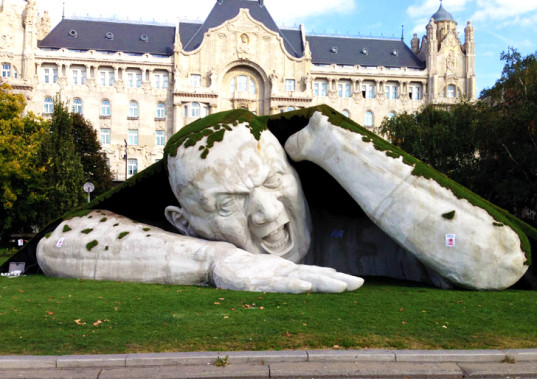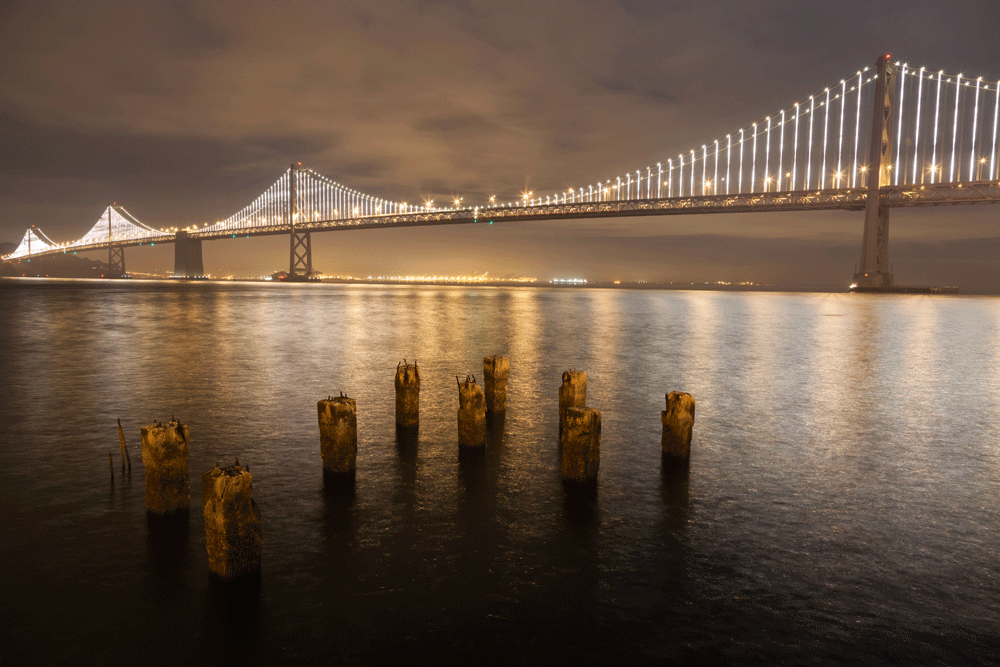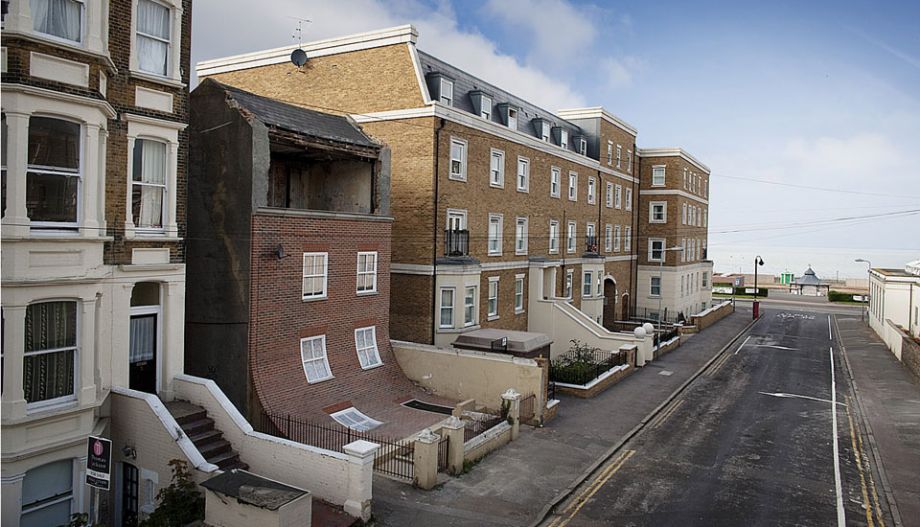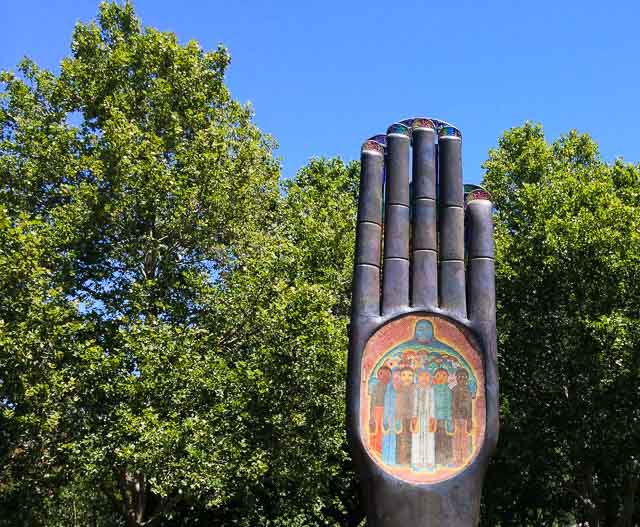Imagine walking through an urban neighborhood and suddenly coming across a giant ogre emerging from the earth. The angry giant clambers out of the lawn and seems to shout, surprising and welcoming visitors.

Perhaps you’re on your way to San Francisco. It’s nighttime. You’re driving west from Oakland, across the Bay Bridge, and as you emerge from the Yerba Buena Tunnel, you’re met with a massive spectacle of shimmering, ascending and descending lights, the largest LED light sculpture in the world.

Maybe you’re on vacation, wandering off-the-grid through a decaying, seaside neighborhood, and you stumble upon a dilapidated brick building that seems to be sliding right off its foundation. As you pause, you notice other tourists and visitors gathering around the building and speculating about the intended meaning of the striking sculpture.

Creative works of public art serve many purposes. In the case of The Bay Lights, the San Francisco Bay Bridge light sculpture, the Burning Man-inspired work is meant to be a beacon, something so inspiring that it “just melts our differences away, and lets us experience a sense of wordless awe together.” The “Sliding House” sculpture has become a catalyst, attracting tourists and helping to reinvigorate a crusty seaside town in England. And in Budapest, the Giant Ogre “shows visitors that public art can be part of the city fabric, fusing architecture, nature and art for an all-encompassing experience.”
Public Art Adds Value
Public art reflects our values as a society, adds meaning to our cities, and connects past, present, and future generations of public space users. Public art is also an equalizing force, accessible to everyone. Studies show that public art reduces crime, encourages public safety, and stimulates economic development. Public art comes in many forms, including temporary, permanent, and even pop-up exhibits that elevate quality of life.
It’s not enough, however, to simply drop a beautiful public art project into a public space. For a work of public art to become an iconic place-maker, it should tell a story, one that is meaningful in the context of its time and place and one that resonates with the members of the surrounding community.
A successful public art project also relies heavily on the design of the space in which it is located. An ideal site for public art is inviting, well-maintained, and easy for the public to access; and the site contains design amenities like seating or picnic areas that encourage people to linger. Public art projects are “most effective when they are part of a larger, holistic, multidisciplinary approach to enlivening a city or neighborhood. In this way, public art can contribute both to community life and to the service and vitality of public spaces.”
Herein Lies the Key
Inviting, well-maintained, shared common spaces are a key ingredient to Westlake Urban’s designs. The unifying theme to our designs is the focus on the spaces between the buildings. These community spaces are designed to humanize the environment, energize the space, encourage a sense of ownership, and give the community a stronger identity. Public art is a powerful way to create a focal point that enhances the quality of the space.
Take for example Beniamino Bufano’s “Hand of Peace”, our most recent foray into public art. Bufano was one of California’s most beloved and colorful artists. He created works that were “big enough to belong to everybody.” The William H. C. Chang Family, owners of Westlake Realty Group, recently finalized an agreement to loan the work to the City of Walnut Creek for 25 years. Hidden for decades, the 30-foot tall sculpture is now on prominent display in Walnut Creek Civic Park symbolizing unity among diverse cultures and races. The work speaks to the necessity of diversity and the challenges of achieving global nonviolence, a fundamentally important and still-relevant message in society today.

“Hand of Peace” also illustrates the collaborative and respectful way we will engage the community through formal and informal conversations with residents, neighbors, and community leaders. Westlake Urban worked in close partnership with the City of Walnut Creek and community members to identify the ideal location where “Hand of Peace” will be well maintained and easy for the public to access.
Extra Caution Required
“It is difficult to design a space that will not attract people; what is remarkable is how often this has been accomplished.”
—William H. (Holly) Whyte
As experienced developers—whether designing new projects or curating new works of public art—we know our success is contingent on our ability to achieve genuine partnership the communities in which we work.
Many times the public has been disappointed by developers who are only in it for the short term. At Westlake Urban, we are committed to investing for the long term as we transition properties to be more urban, connected, diverse and environmentally focused. This long-term view also applies to our intent to curate meaningful works of public art that speak to the community and enliven the spaces between buildings.
Our commitment to building better communities around the Bay Area will be on display through our outreach efforts, our designs, and our public art. We are building for the community, and we realize that we won’t be successful without the community’s support.
We welcome you to join the conversation. Visit our website, subscribe to the blog, follow us on Twitter, attend a community meeting, or just pick up the phone and give us a call. We would love to hear from you.
